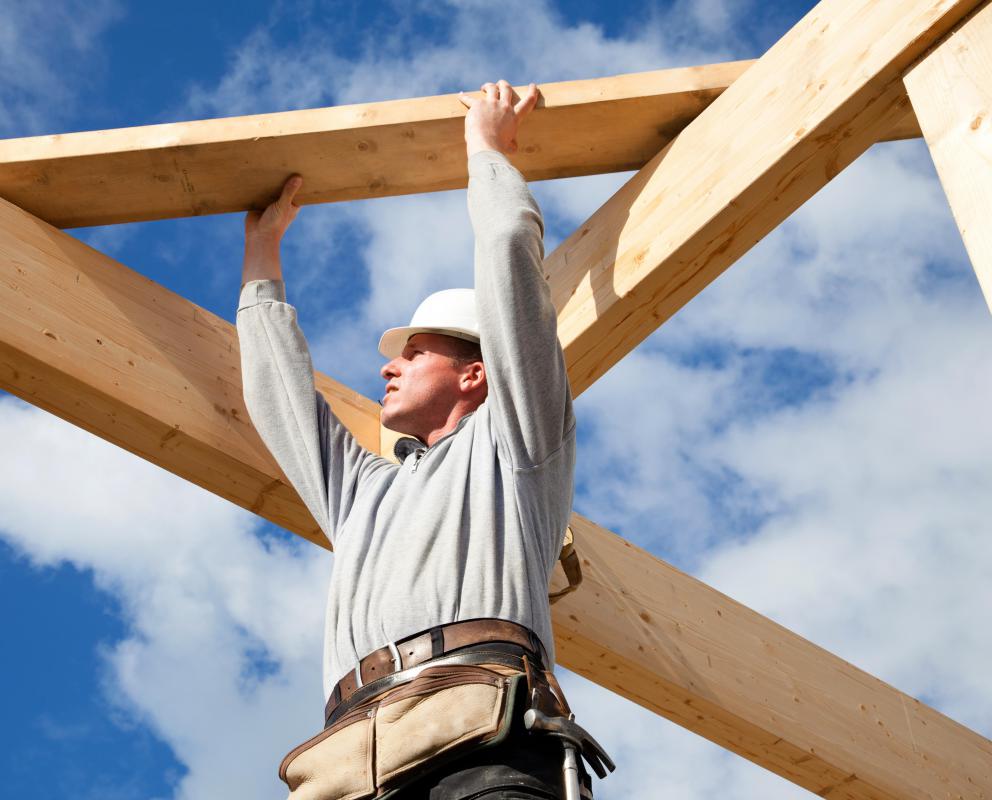At HomeQuestionsAnswered, we're committed to delivering accurate, trustworthy information. Our expert-authored content is rigorously fact-checked and sourced from credible authorities. Discover how we uphold the highest standards in providing you with reliable knowledge.
What is Weatherization?
Weatherization, sometimes called weatherproofing, is the process of protecting a structure, such as a home or business, from outside elements. Not only can weatherization help decrease energy costs, but it can also help protect buildings from possible water, wind, sun and insect damage. When structures shift or are damaged by the elements, such as wind or rain, it is important that a building's windows and doors maintain an airtight seal to prevent against further damage and energy loss. Caulking, weatherstripping, and replacing old windows with energy efficient alternatives can help weatherize a structure. It should be noted that weatherization is a different process than winterization, which refers to those efforts to prepare such things as a home, car, or pool, for an upcoming winter.
The high costs associated with weatherizing a structure often deter companies and homeowners from taking on such a project. If done properly, however, it can reduce a building's energy consumption and thereby reduce energy costs. Reduced energy costs are achieved largely because energy, such as heat, can no longer seep out of gaps and cracks in a structure. As a result, heating a well sealed home will require less heat and therefore cost less. In most cases, the costs of weatherizing a home are recuperated within a year of weatherizing it. According to the US Department of Energy, weatherization reduces heating costs by 32 percent.

Weatherizing is most popular in homes, as opposed to commercial buildings. For older buildings, weatherizing may be partially accomplished. For example, windows may be weatherstripped. While this will help reduce energy consumption and therefore energy costs, it's not a complete approach. Whole-house or whole-building weatherization, on the other hand, goes beyond simple fixes to include replacing the structure's entire heating units, cooling units and appliances. More modern structures are often being built with weatherized processes.

Weatherization not only helps a company's or individual's energy expenses, it helps the environment as well. As a result, many governments offer weatherization incentive programs. Each state in the United States, for example, have weatherization incentive programs. The U.S. Department of Energy has provided weatherization assistance for more than 30 years to low-income families to help reduce their energy bill.
The United Kingdom has also long been a proponent of weatherizing homes and other buildings. Under its Heat and Energy Saving System, the UK aims to reduce every building's carbon emissions. Loans area available to qualifying households that want to weatherize their home. Assistance is also available to increase the energy efficiency of older buildings. The UK, like many other countries, sees weatherization as the key to lowering its dependence on foreign fossil fuels and creating a healthier living environment.
AS FEATURED ON:
AS FEATURED ON:












Discuss this Article
Post your comments